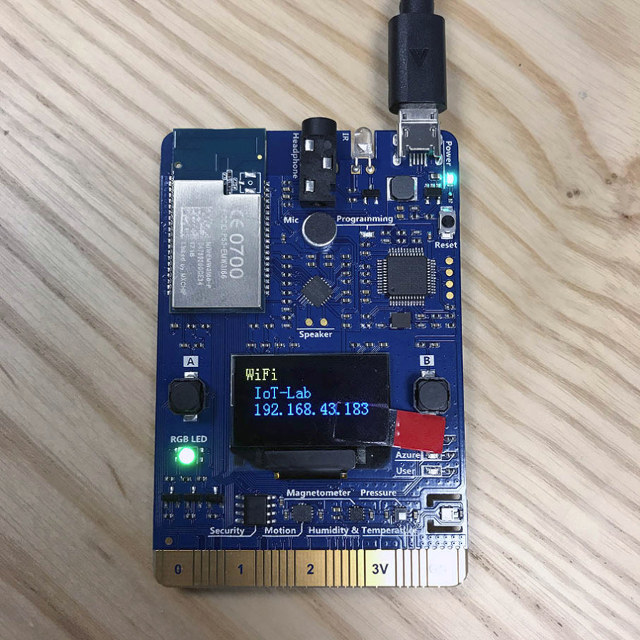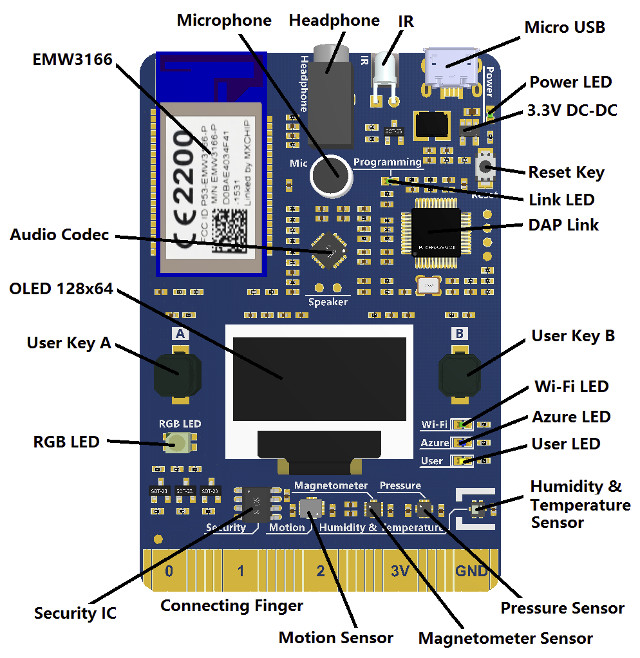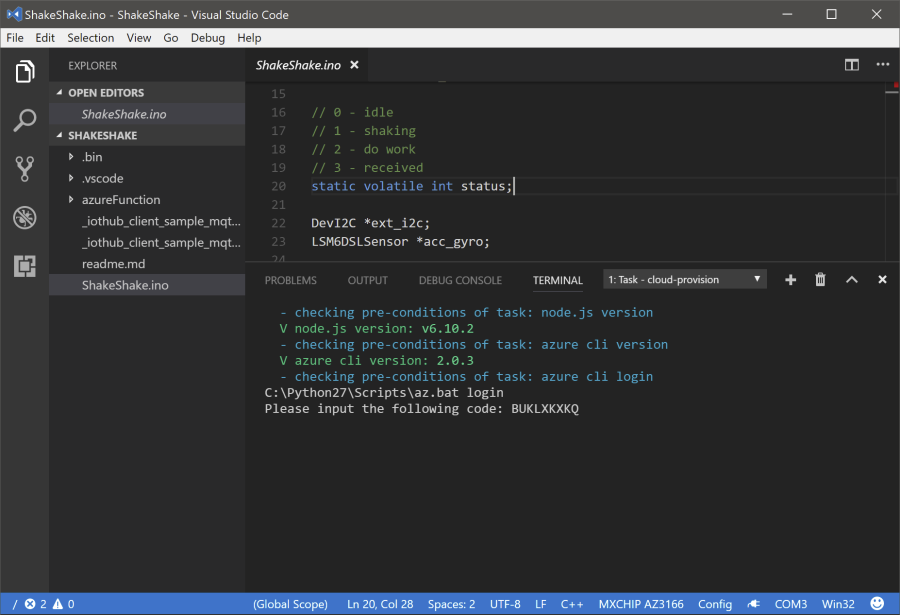MXCHIP is a Shanghai based company designing and manufacturing WiFi IoT modules such as EMW3165, which has now made a development board based on their EMW3166 STM32+ Cypress module – called MXChip AZ3166 – specifically designed for Microsoft Azure cloud computing platform.

MXChip AZ3166 board specifications:
- Wireless Module – EMW3166 WiFi module with STM32F412 ARM Cortex M4F MCU @ 100 MHz with 256KB SRAM1MB+2MB SPI Flash, Cypress BCM43362 WiFi chip
- Display – 128×64 OLED display
- Audio – Audio codec, built-in microphone, and 3.5mm heaphone jack
- Sensors – Motion sensor, magnetometer, atmospheric pressure sensor, temperature and humidity sensor
- Expansion – Finger extension interface with 25 external I/O pins including GPIOs, I2C, I2S, UART, ADC, Reset, 3.3V, and GND
- Debugging – DAP Link emulator
- USB – 1x Micro USB port for power, programming, debugging
- Misc – 2x user buttons; 1x RGB light; 3x working status indicator; IR emitter; Security encryption chip
- Power Supply – 3.3V DC, maximum current 1.5A; 5V via micro USB port
 The AZ3166 board is Arduino compatible can be used for prototyping IoT and smart device solutions using Visual Studio Code with Arduino Extension. Applications can integrates with various services like Azure IoT Hub, Logic App and Cognitive Services. You’ll find more technical details on Microsoft’s Azure IoT Devkit and MXCHIP AZ3166 pages.
The AZ3166 board is Arduino compatible can be used for prototyping IoT and smart device solutions using Visual Studio Code with Arduino Extension. Applications can integrates with various services like Azure IoT Hub, Logic App and Cognitive Services. You’ll find more technical details on Microsoft’s Azure IoT Devkit and MXCHIP AZ3166 pages.

The board is not for sale yet, but you could get a preview board for free, if you can meet Microsoft’s “select criteria”.
Thanks to Freire for the tip.

Jean-Luc started CNX Software in 2010 as a part-time endeavor, before quitting his job as a software engineering manager, and starting to write daily news, and reviews full time later in 2011.
Support CNX Software! Donate via cryptocurrencies, become a Patron on Patreon, or purchase goods on Amazon or Aliexpress





“Expansion – Finger extension interface with 25 external I/O pins”
I not found, what is the 25 interface…?? SPI/ GPIO / serial…? other?
@haze
It’s in the “Microsoft’s Azure IoT Devkit page” linked in the article.
Direct link to the I/O pinout table: https://1drv.ms/x/s!AjIzeUaRJJnPh94rOF3IXHNdY3HZ_A
i saw this document after 5 minutes my question